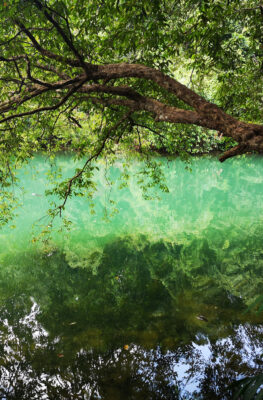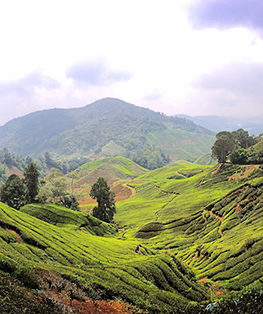Published on April 15, 2016

Temple of Dawn, Thailand. Image courtesy of Tourism Authority of Thailand.
A three-hour layover at any Southeast Asia international air gateways does that place a serious injustice. Many major Southeast Asia airports sit at the navel of some of the hottest action in the region: give each place the courtesy of a two-day layover to experience these places in full.
Bangkok in Thailand services flights from all across the world flying into Suvarnabhumi Airport. Suvarnabhumi is immediately accessible by rail from the city center. Catch a Skytrain from Suvarnabhumi to Siam Square in Bangkok, one of the city’s most easily accessible retail centers.
A growing complement of hotels and hostels have turned Siam Square into a viable alternative to backpacker enclave Khao San Road. Shopping is a major Siam Square preoccupation, and the best deals can be found at MBK Center, a multilevel mall filled with electronics, food, clothes, and accessories.
From here, you can take the Skytrain or taxi to innumerable other adventures. You can immerse (hopefully not literally) in the traditional floating market experience at Talingchan, which is best seen in the morning before 7am. At Sukhumvit district, Soi 38 is renowned for its wide selection of street food.
Don’t leave Bangkok without exploring its palaces and temples, starting with the Grand Palace, constructed in 1782 for the then-new Chakri ruling dynasty. The present king may live elsewhere, but over a century of history and culture live on in the Palace grounds, via traditional palace buildings, throne halls and the most sacred Buddhist templein Thailand, the WatPhraKaew.
Other Buddhist sites worth seeing in Bangkok are WatPho, where you can stop by at the massage pavilion to try traditional Thai massage using ancient techniques to release muscle tensions with a selection of Thai massage courses available for those who are interested and WatArun, the “Temple of Dawn”, where the Thailand Countdown 2016 celebrations took place with a 9-minute pyrotechnic display ofmore than 5,500 fireworks making it become a new iconic landmark for Thailand.

Mosque in Kampong Glam, Singapore. Image courtesy of Singapore Tourism Board.
Singapore‘s status as a major Southeast Asia airline hub is largely due to its award-winning Changi Airport and its international connections. From Changi Airport, Singapore’s efficient and trouble-free public transportation system immediately connects travelers to the island-state’s countless attractions.
Start by going to Singapore’s Chinatown and check into one of its boutique hotels – we’ll use this Chinese ethnic enclave as a jumping off point to our local adventures. While you’re in Chinatown, don’t miss out on the essential local street food experience: eating at a hawker centre, where cheap and delicious local cuisine can be had for less than USD 3 a meal. (If you are in the vicinity, we recommend Chinatown Complex Food Centre, along Smith Street just 2 minutes’ walk from Chinatown train station, or Maxwell Food Centre, right across the Buddha Tooth Relic Temple.)
Trains or buses can take you shortly to other Singapore attractions. Alight at Bugis MRT Station to visit Kampong Glam, the heart of Singapore’s Muslim community and home to a series of bazaars, traditional food stalls and even hipster clothing outlets.
Look to the future by visiting Marina Bay, Singapore’s newest and most modern district, and site of architectural marvels like the Marina Bay Sands, the Singapore Flyer and Gardens by the Bay. Finally, explore your wild side by taking the bus across the island to the Singapore Zoo, or even better, wait till nightfall to visit the Singapore Night Safari for a close encounter with nocturnal animals.

Binondo Church, Manila, Philippines. Image courtesy of Mike Aquino
Manila, Philippines offers a different difficulty level: the city’s massive sprawl and inefficient transport networks can tie you up in traffic if you’re not careful. So limit your Manila visit to its historic center, clustered around Manila Bay and the Pasig River.
Start with a taxi ride from Ninoy Aquino International Airport (NAIA) to Roxas Boulevard, a scenic avenue right alongside Manila Bay. A number of hotels can be found along Roxas Boulevard and the Malate and Ermita Districts adjoining it. Once you’ve settled in, explore the bayfront on foot, by the horse-drawn cart known locally as the calesa, or by taking the colorful minibus known as the jeepney.
Nearby stops include Rizal Park, the city’s foremost park and the burial site of the park’s namesake, the country’s national hero Jose Rizal; Manila Ocean Park, an aquarium and animal exhibit that displays some of the Philippine waters’ most vividly-colored fish; and the Cultural Center of the Philippines, home to the country’s high arts scene.
For more historic color, visit the world’s oldest Chinatown Binondo, where you can admire the Chinese-influenced Binondo Church and eat at a local noodle shop for the full experience; or go to Intramuros, the walled city erected by the Spanish, a historic center still in the process of rebuilding after the war.

Bundara HI, Jakarta, Indonesia. Image courtesy of Indonesia Ministry of Tourism
Jakarta, Indonesia also suffers from similar traffic problems to Manila, thus necessitating a similarly constricted itinerary.
From Jakarta’s Soekarno-Hatta International Airport, take a taxi to central Jakarta around or near the Bundaran HI roundabout. Closer to the roundabout you’ll find Jakarta’s top five-star hotels, while the cheaper accommodations can be found a little further away.
Central Jakarta itself is home to several key stops, including Monas (National Monument), a gold-topped spire erected by former president Sukarno to commemorate the country’s independence; Masjid Istiqlal, Southeast Asia’s largest mosque; and Plaza Indonesia, a major shopping mall on the edge of Bundaran HI.
The central Jakarta district of Menteng is home to Jalan Surabaya, a streetside bazaar for secondhand goods and antiques: cool Javanese and other ethnic artworks, old books, coins and even LP records are all available for the retro fanatic’s perusal.
Finally, risk getting stuck in traffic to visit North Jakarta’s Taman Fatahillah square, the site of Old Batavia where the former Stadthuis now serves as the Jakarta History Museum; after exploring the area’s other museums, like the Museum Wayang and the Fine Art and Ceramic Museum, chill out with a coffee or something stronger at the Cafe Batavia, a restaurant with a definite old European feel.

KL Sentral Station, Kuala Lumpur, Malaysia. Image courtesy of Mike Aquino
Kuala Lumpur, Malaysia thankfully gets around Manila and Jakarta’s traffic woes by providing a reliable fast-rail service between Kuala Lumpur International Airport and KL Sentral, the capital’s transport hub. Once you exit the KLIA Ekspres train onto KL Sentral, you can easily take RapidKL and Monorail to key stops throughout the city.
For a two-day layover, check into a hotel in Bukit Bintang (for middle to high spenders) or hostel in Petaling Street/Chinatown (for backpackers). Both are served by the free GoKL city bus that circulates throughout central Kuala Lumpur; many of KL’s major attractions stand alongside stations along the GoKL circuit.
See the city from high above on two iconic buildings in central KL: Petronas Towers at the Kuala Lumpur Convention Centre; and KL Tower. For a taste of history, visit Dataran Merdeka(Independence Square), the site of Malaysia’s declaration of independence and several historic colonial-era buildings.
Ethnic enclaves like Brickfields and Petaling Street give visitors a taste of the other cultural communities who make up Malaysia’s rich demographic mix – Brickfields is KL’s little India, while Petaling Street is its Chinatown. Finally, for a nature break, visit the Perdana Botanical Gardens to check out the city at its greenest.

Ho Chi Minh Mausoleum.Image courtesy of Vietnam National Administration of Tourism.
Hanoi, Viet Nam is served by Noi Bai International Airport: despite its distance of over 35km from the city center, travelers can easily make a short two-day layover for a quick tour of the capital’s sights.
Make a quick round of the city’s ancient architectural works, including the Old Quarter and over 600 pagodas and temples – among them the One Pillar Pagoda (built in 1049), the Temple of Literature (built in 1070), and the Ha Noi Citadel. The 19th and 20th centuries brought French colonial architecture and post-colonial constructions, among them the Ha Noi Opera House, the Presidential Palace, and President Ho Chi Minh’s Mausoleum.
Ha Noi’s lakes are not to be missed: from the massive West Lake to the picturesque HoanKiem Lake, these bodies of water are a great place to catch the local color, including elderly gentlemen playing board games and young couples taking their pre-wedding photos.
Finally, the area’s traditional handicrafts can be bought at the many shops of the Old District, or better yet, visited at their source in the many traditional handicraft villages in the area: Bat Trang pottery village, NguXa bronze casting village, and Yen Thai village for glossy silk.






